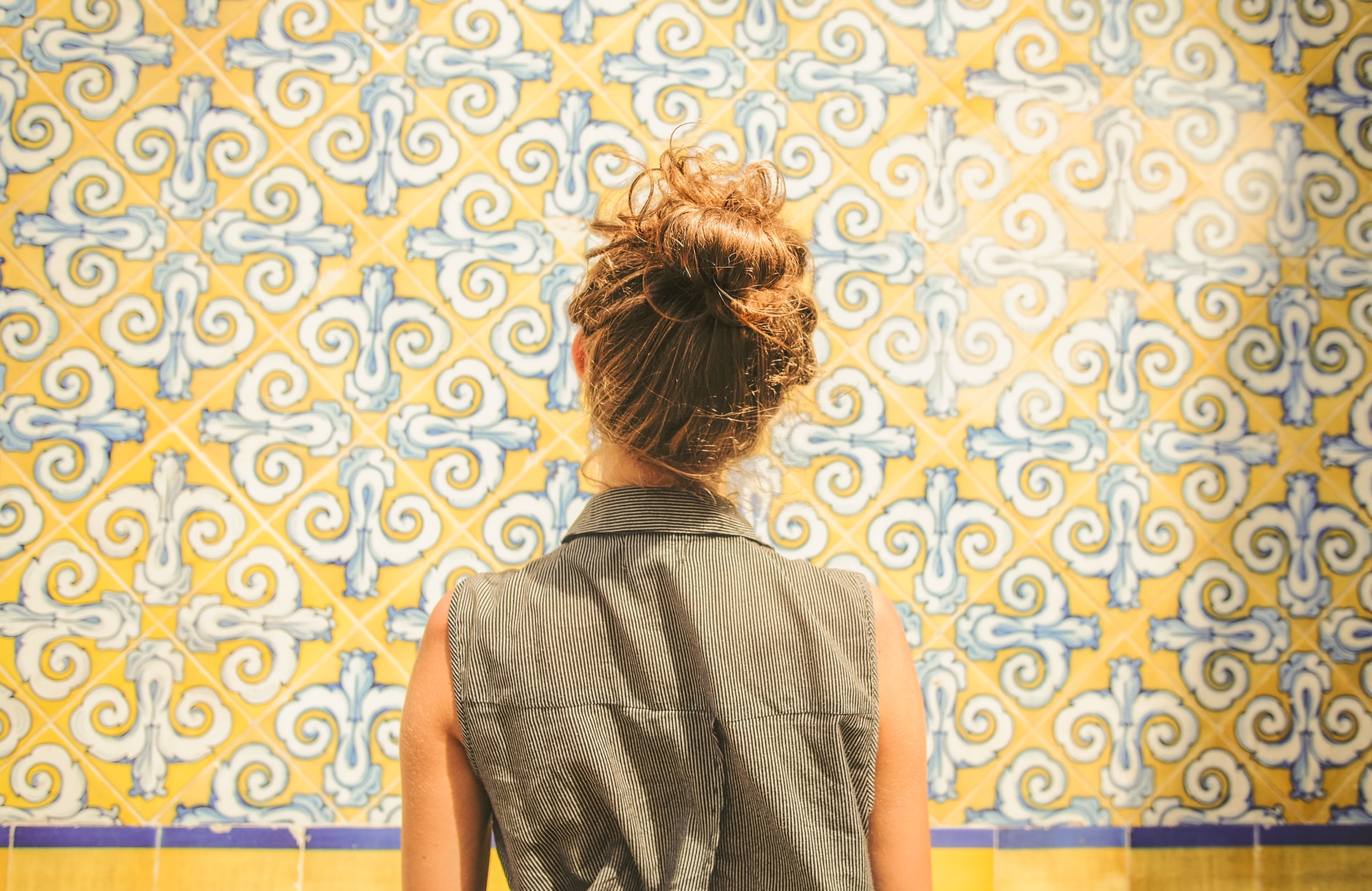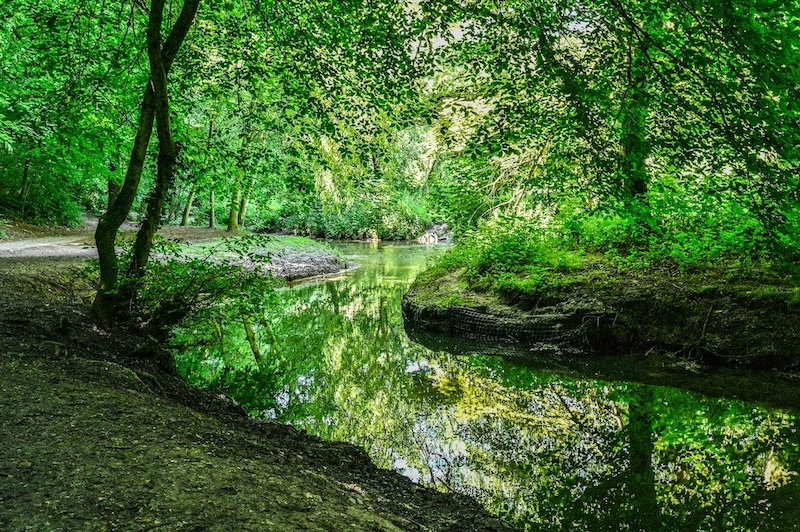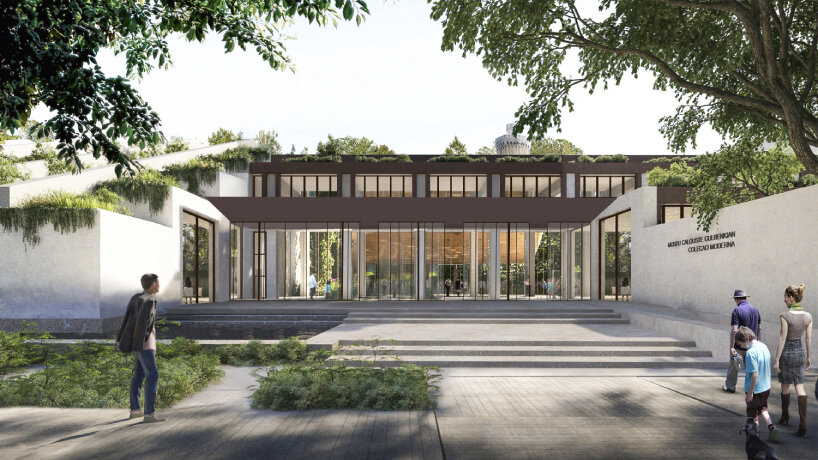It is perhaps the most famous destination from Lisbon, and it is not too difficult to understand why. It is a classical experience, a breathtaking journey with jaw-dropping views and mystical locations.
Sintra is one of those rare places where you really feel something magical or even ethereal under your skin. Sometimes during the winter there is a thick mist around Sintra’s region which gives a fabulous dreamlike vibe.
This small village 29 kilometers from Lisbon is surrounded by a dense forest, palaces, manor houses of all sorts, locations with Freemason and Knight Templars symbols. It is an epic open-air museum inside a natural reserve with several architectural styles cohabiting the same space. It is not a coincidence that most people describe Sintra as Romantic.
1. Quinta Da Regaleira: Hidden Symbols and Lush Gardens
During Cooltours Full-Day Minivan Small-Group Tour in Sintra, our first stop is at the amazing Quinta da Regaleira property. It may not be the first place on Google searches or travel guides about Lisbon, but it is possibly the most fascinating and mysterious place in Sintra.
The first owner was António Augusto Carvalho Monteiro, who commissioned an ambitious and mysterious plan to an Italian architect, Luigi Manini, who had made a career as a set designer at Teatro La Scalla. However, it was his work in Bussaco Palace that caught Carvalho Monteiro’s attention. Surrounded by gardens, caves, lakes and many enigmatic constructions, Regaleira is truly a masterpiece.

Carvalho Monteiro, one of the most influential freemasons in Portugal at the time, had the desire to build a grandiose space, in which he would live surrounded by symbols that mirrored his interests and ideologies: Conservative, Monarchist and Gnostic Christian. He also wanted to resurrect Portugal’s glorious past, hence the predominance of the Neo-Manueline style with its clear connection to the Discoveries period.
It is said that everything here has a meaning. Even the layout of the massive garden was not made by chance. It is less dominated by trees at the bottom of the property and progressively becomes more and more ‘wilder’ towards the top. This disposition is related to Carvalho Monteiro’s belief in Primitivism.
One of the most incredible places in Regaleira is the Initiation Well. The spiral staircase consists of nine levels separated by flights of 14 steps each, invoking references to Dante’s Divine Comedy (9 circles of Hell, Paradise and Purgatory) and the women’s fertile period usually starting at half of the 28 days lunar calendar.

It is believed that it was used by the Freemasonry as a ritual location where the Initiate would go down the well and then walk into a grotto in complete darkness towards the light. This was a way of getting in touch with one’s deepest fears and overcome them, symbolizing individual ‘ascension’ and rebirth.
The symbolism of this location is related to the belief that Earth is the maternal womb from which life comes, but also represents the ‘grave’ where we all return to.
2. Pena Palace: On Top of The World
Pena Palace is perhaps one of the most recognized symbols of Portugal, one of its most famous postcards without a doubt. The mixture of styles it displays (Gothic, Manueline, Neo-Islamic, Neo-Renaissance) is typical of architectural Romanticism and forms a beautiful frame of a superb and colorful castle nested on top of a mountain.
During the 1755 massive earthquake that sent a destructive shockwave in Lisbon and outskirts, a former monastery was destroyed.
The current palace was built in that location during the first half of the 19th century under the guidance of the German amateur architect, Wilhelm Ludwig von Eschwege. Its construction was ordered by King Ferdinand II, consort king and husband of D. Maria II, man of culture and passionate about art and Sintra.
It served as the residence of the Portuguese Royal Family until Queen Amélia spent her last night at the palace before leaving the country in exile.
3. Cabo da Roca: The End of The World
Cabo da Roca is the westernmost point of the European continent, located at the extreme of the Sintra Mountain with gorgeous cliffs. There is also a lighthouse, dated from 1758, 165 meters above the sea level.

4. Cascais & Estoril: Portuguese ‘Riviera‘
Until the middle of the 19th century, Cascais was a town of little relevance, except for its purpose mainly as a defensive and watch post for potential invasions, as evidenced by its fortress dating from the 17th century.
But when the Royal Family chose this place for vacations and for ‘bathing’, everything changed. Cascais and all the entire coastal area met an enormous development, especially with the coming of a new railway line. It was the first ‘beach destination’ in the country.

During the WWII, because of Portugal’s neutral status, Cascais and Estoril welcomed dozens of spies and agents from the warring regimes. Some refugees, namely from European royal families, like King Humberto II of Italy, Carol II of Romania and countless other figures from sports and cultural scenes found safe haven here. One of them was none other than Ian Fleming, the English author that gave birth to the most famous spy in the world! It is believed that the Casino Estoril was the true inspiration for the Casino Royale, the James Bond’s first novel.
On the way back to Lisbon, we drive along the Marginal Avenue, a winding waterfront road with sweeping views of the Tagus river and the Atlantic Ocean while the sun sets. A perfect way to end an unforgettable experience.














